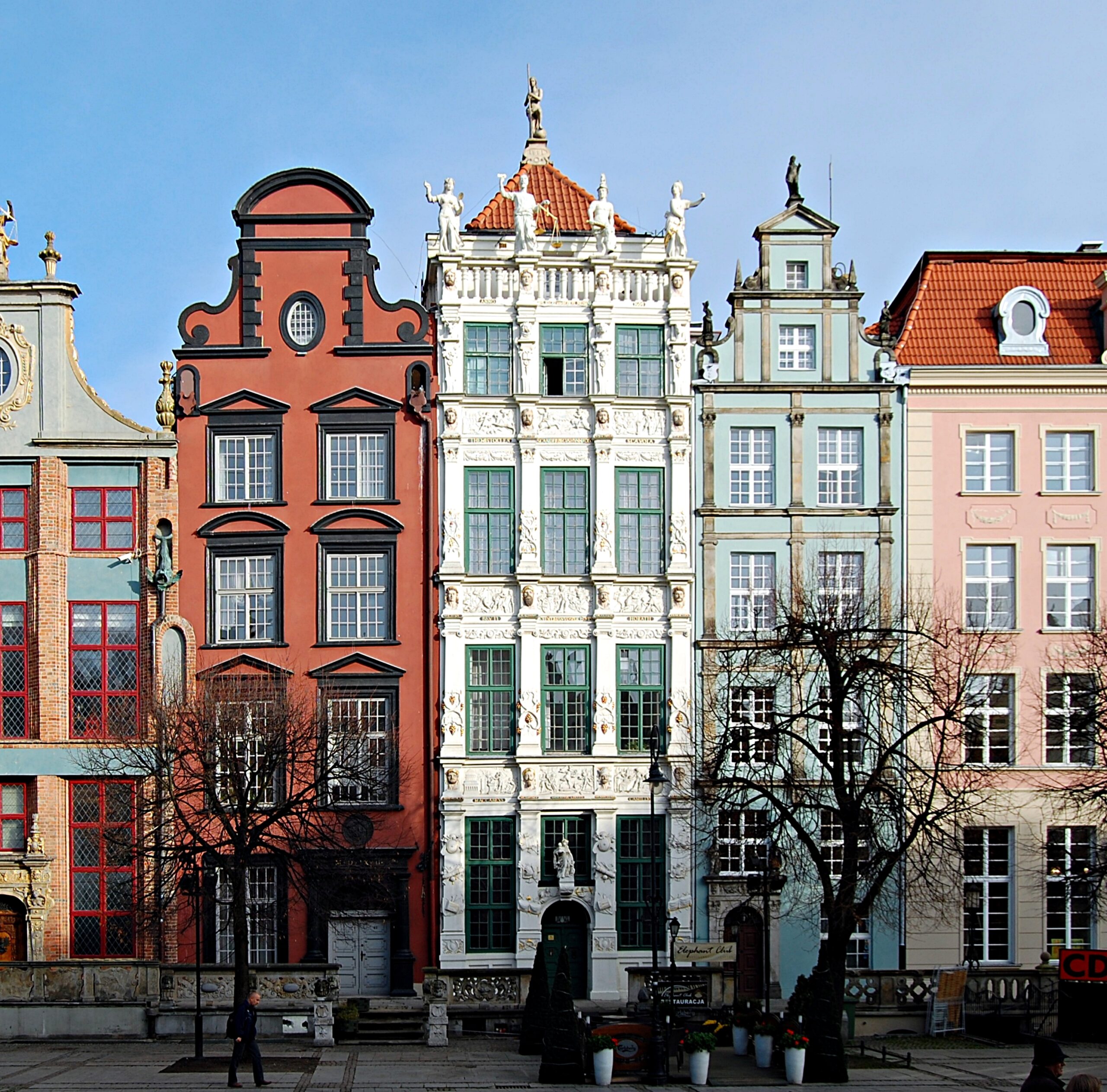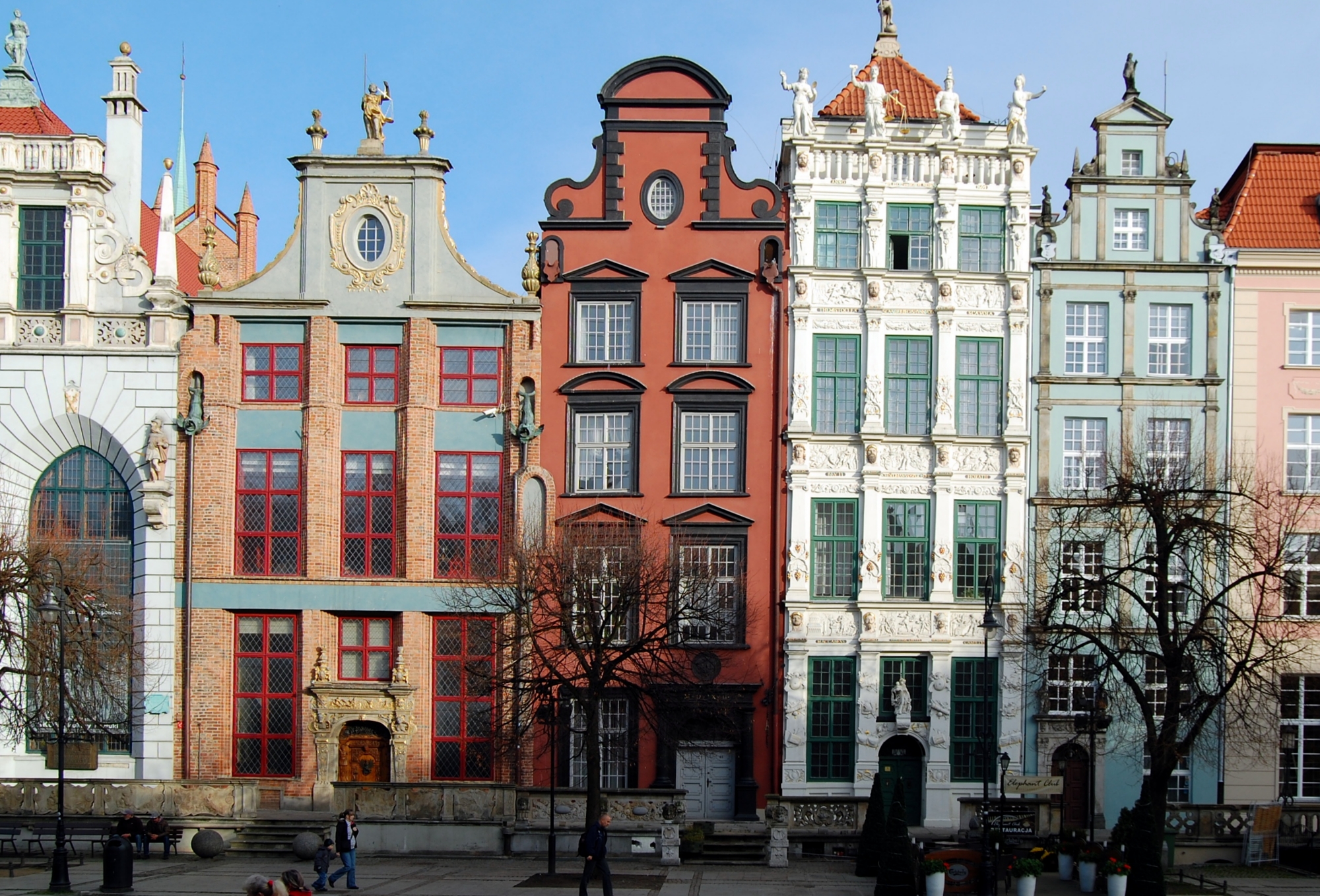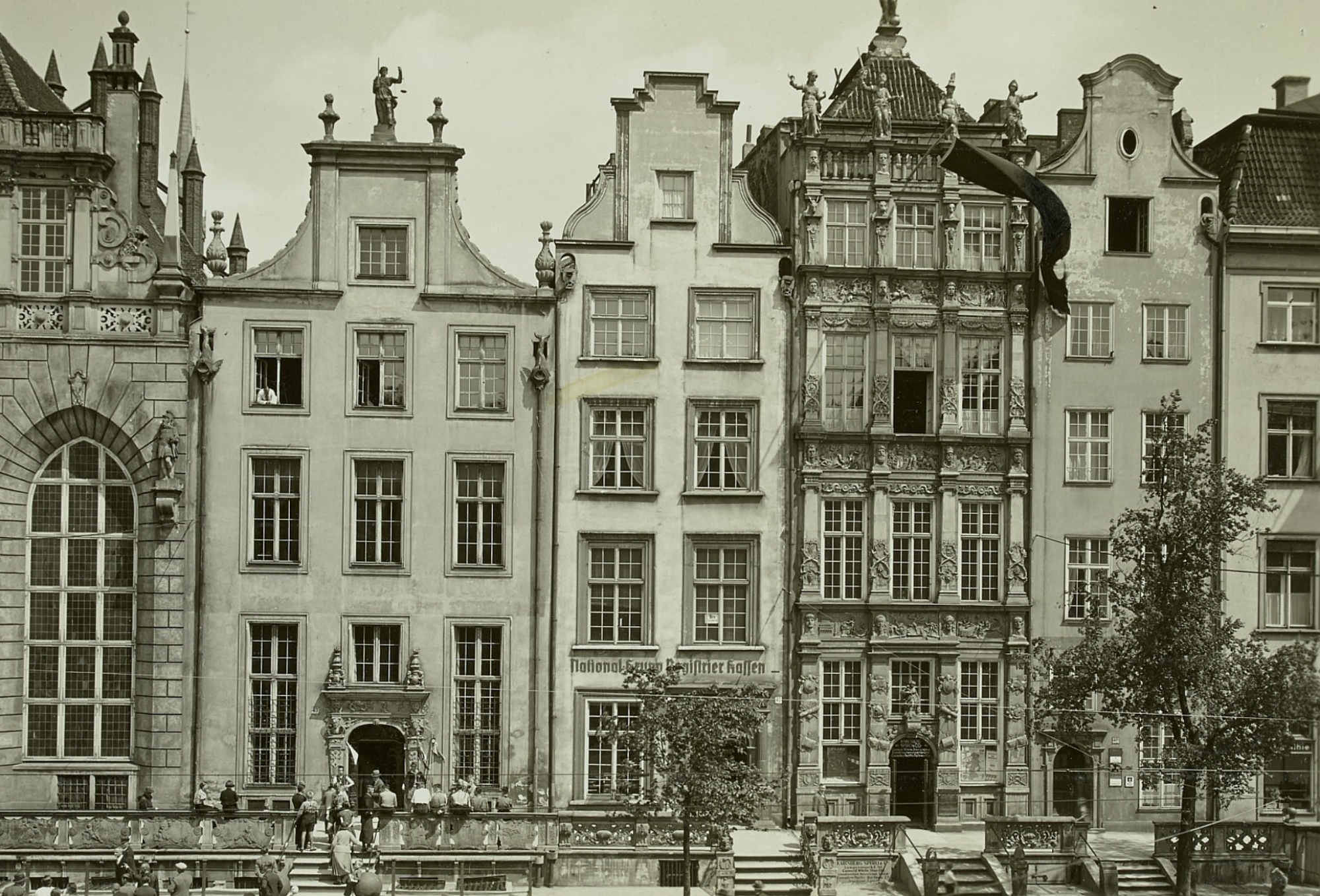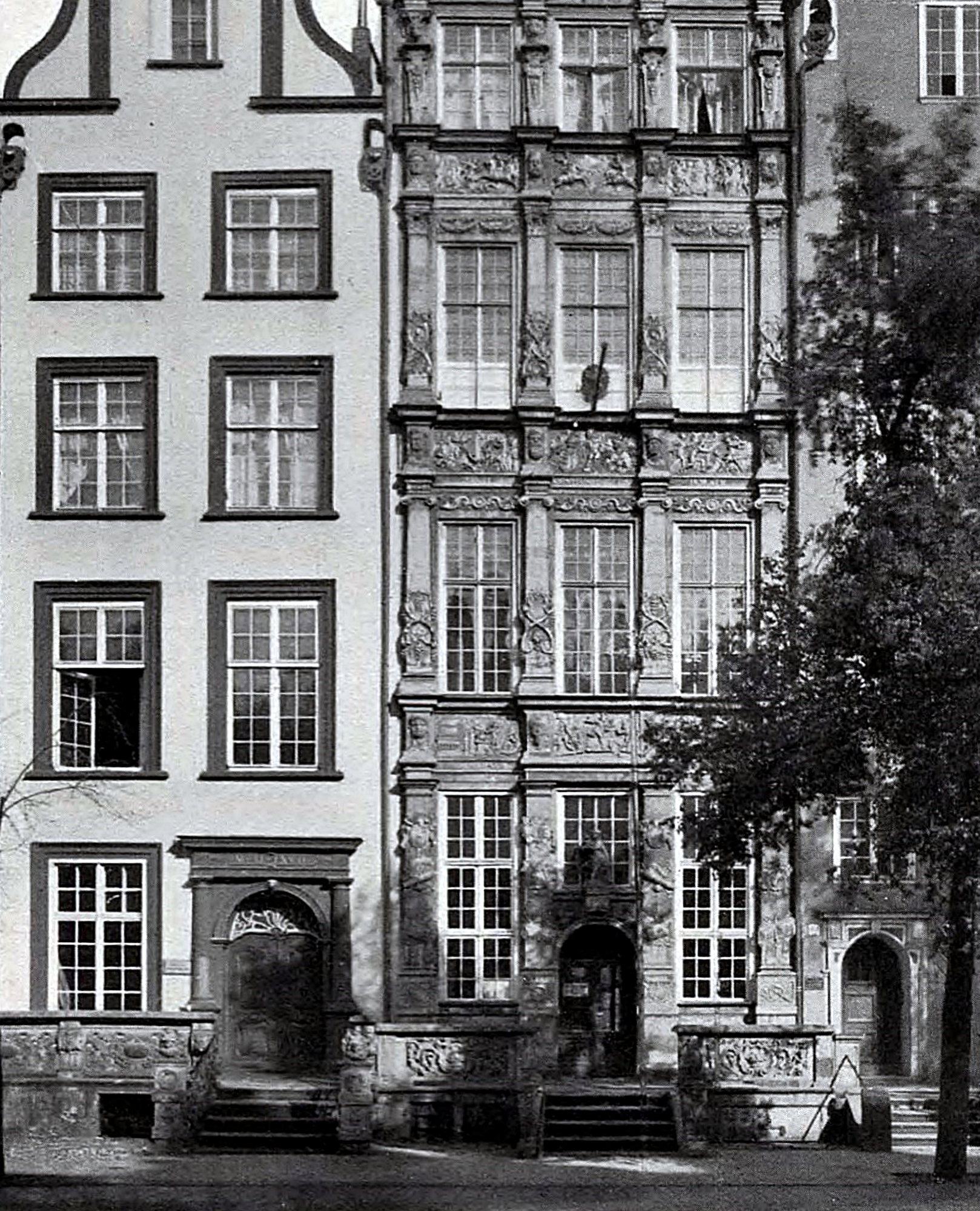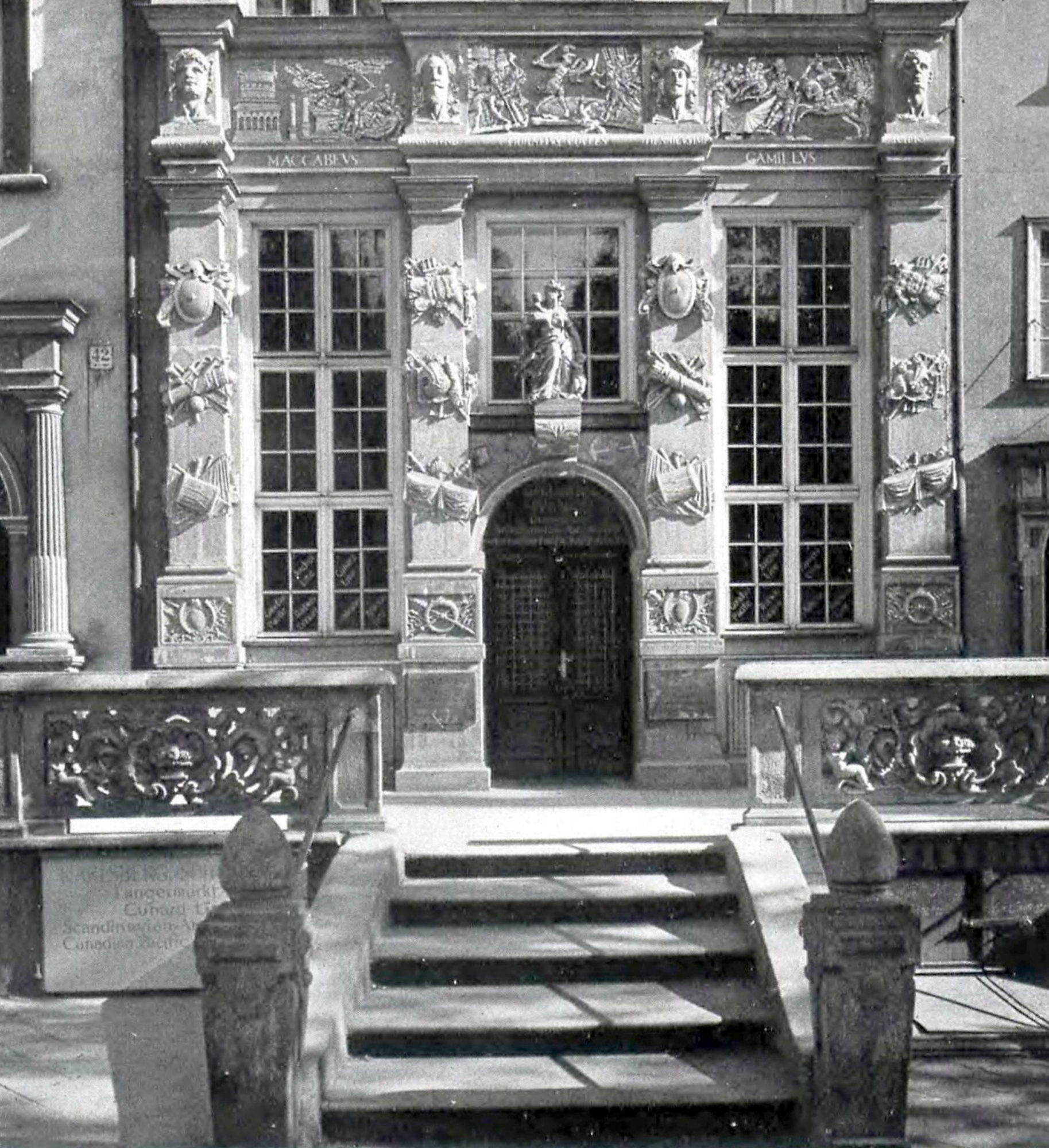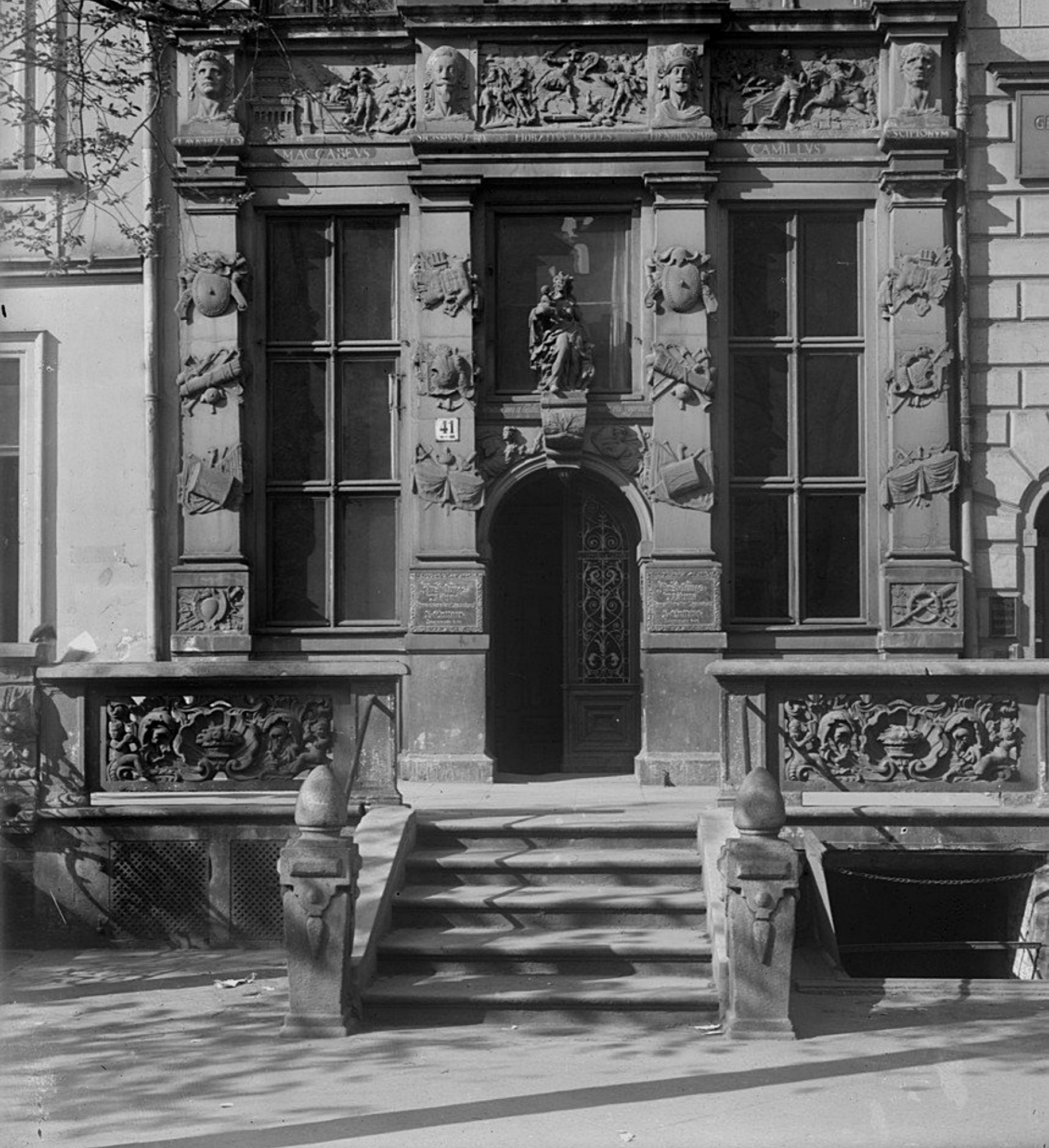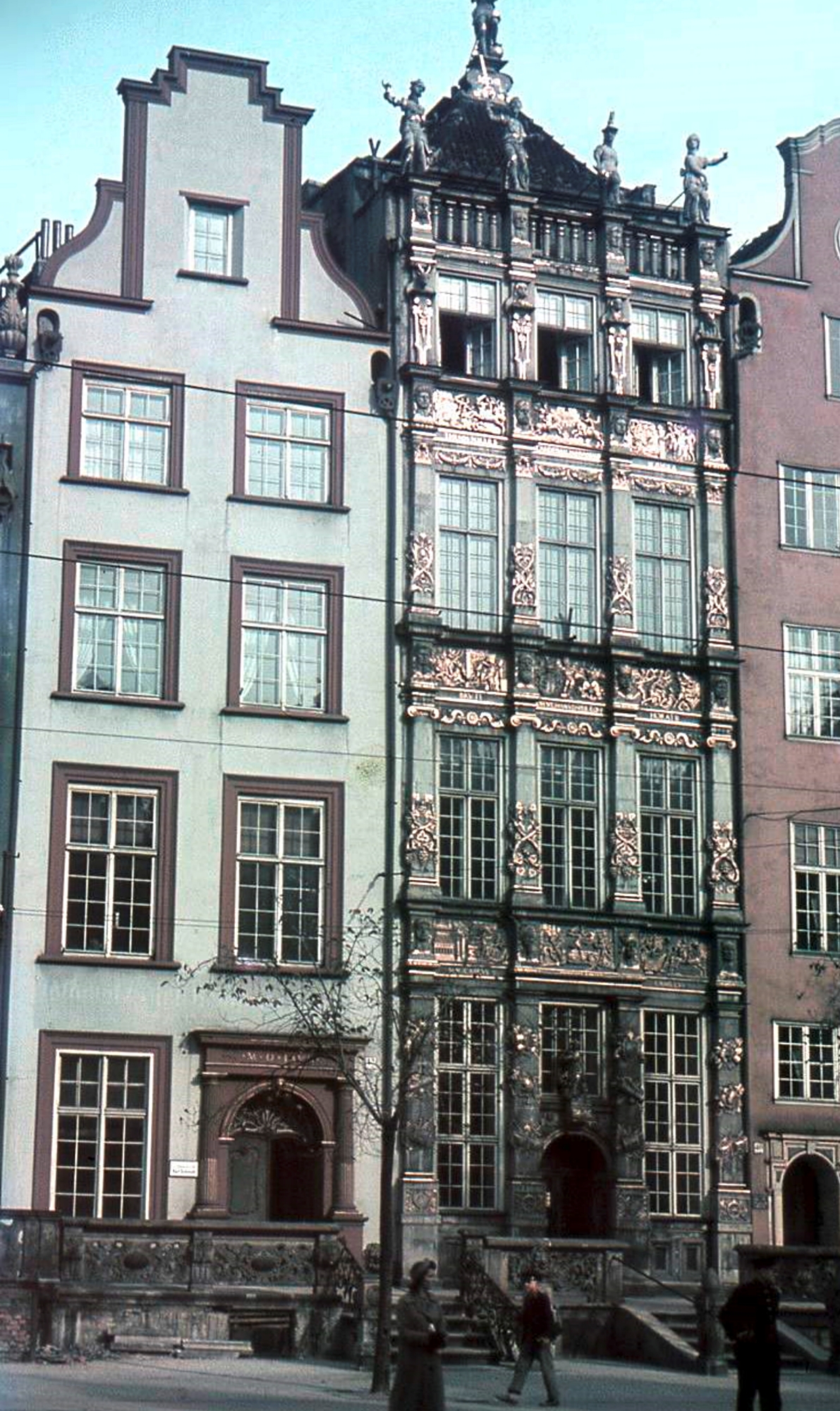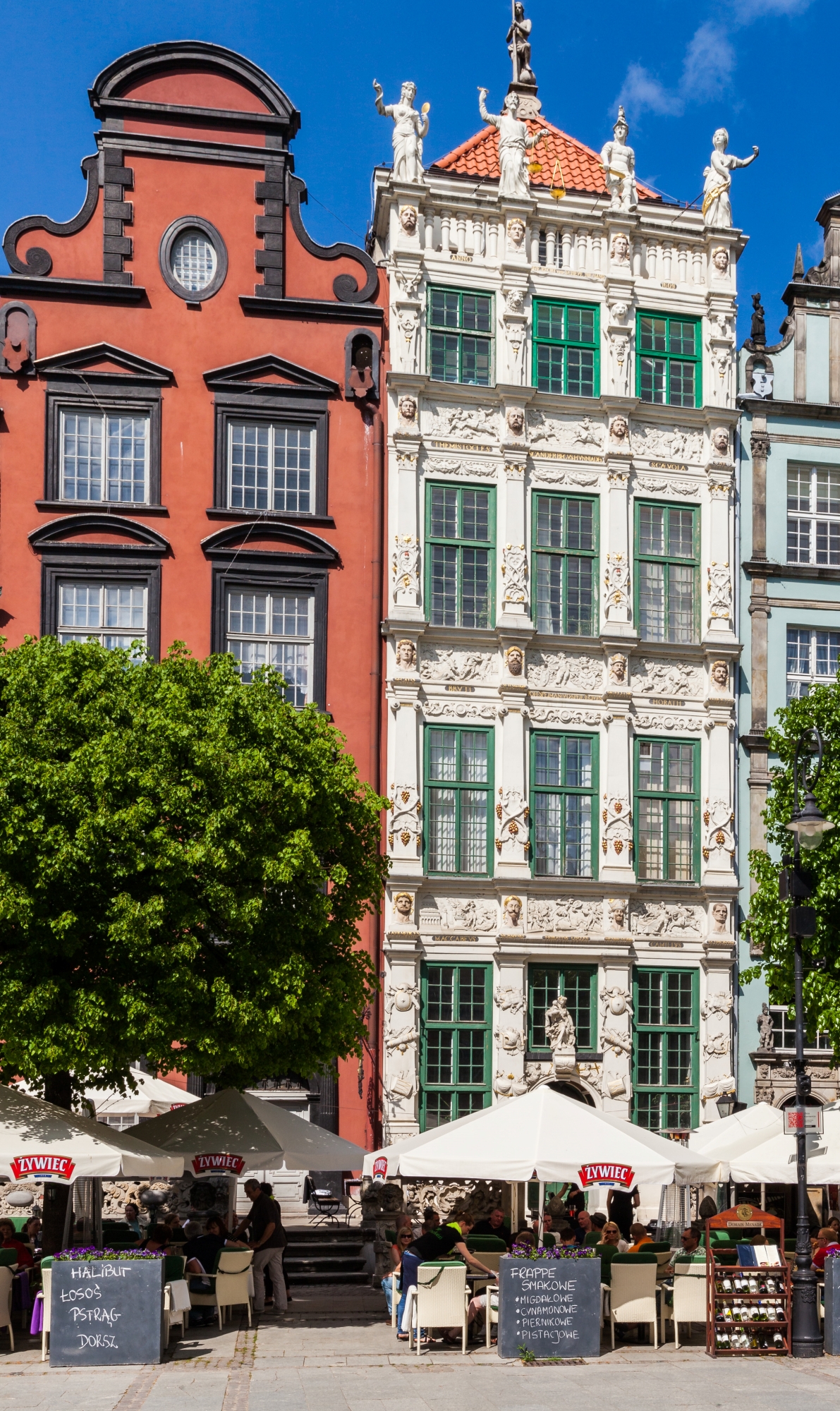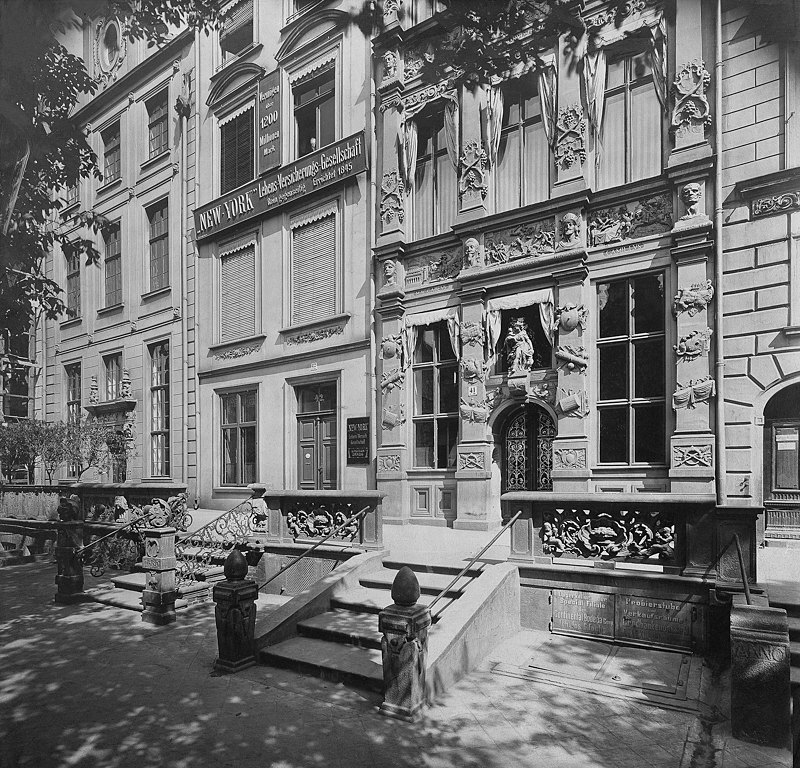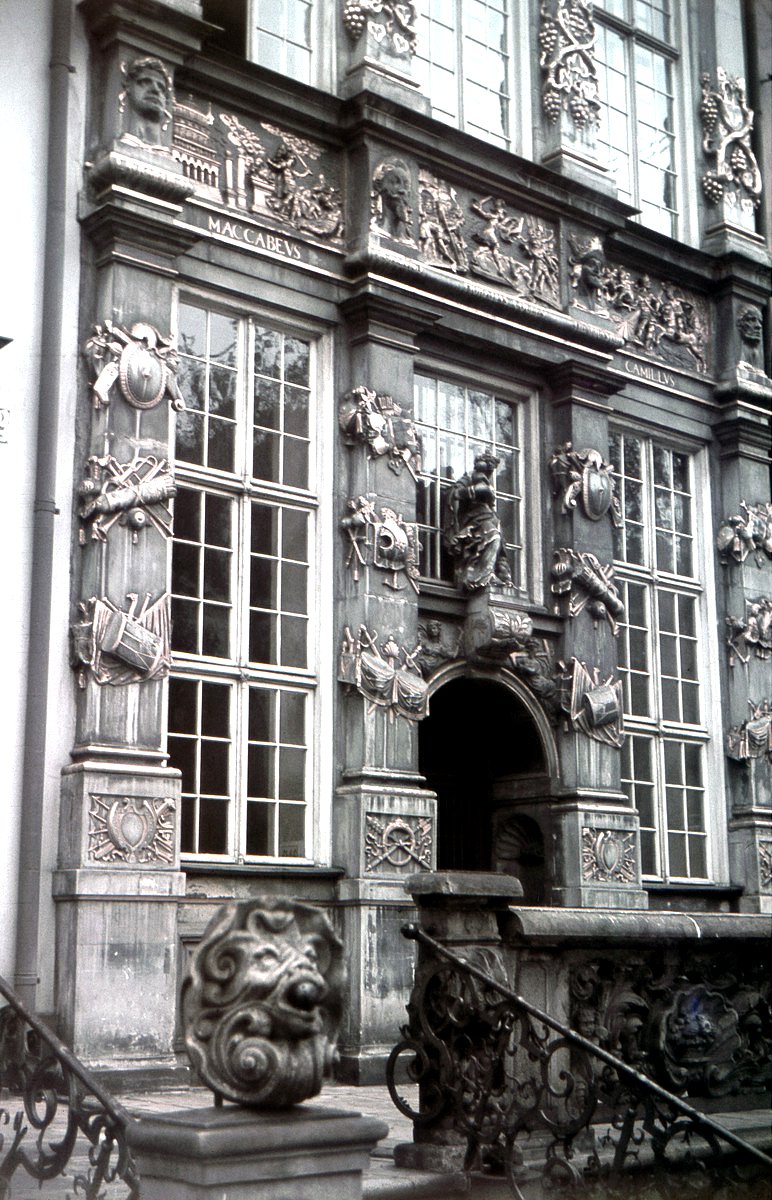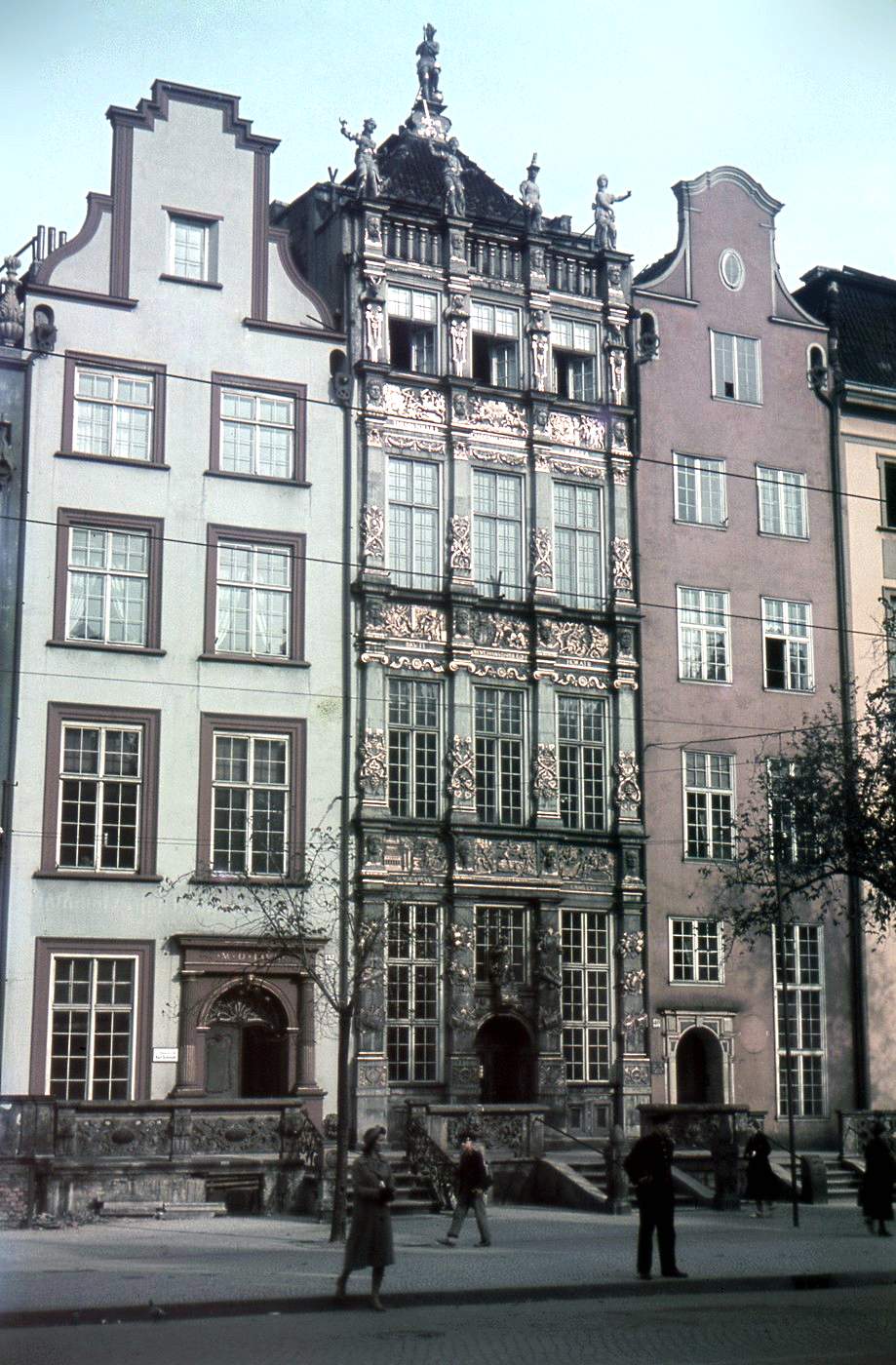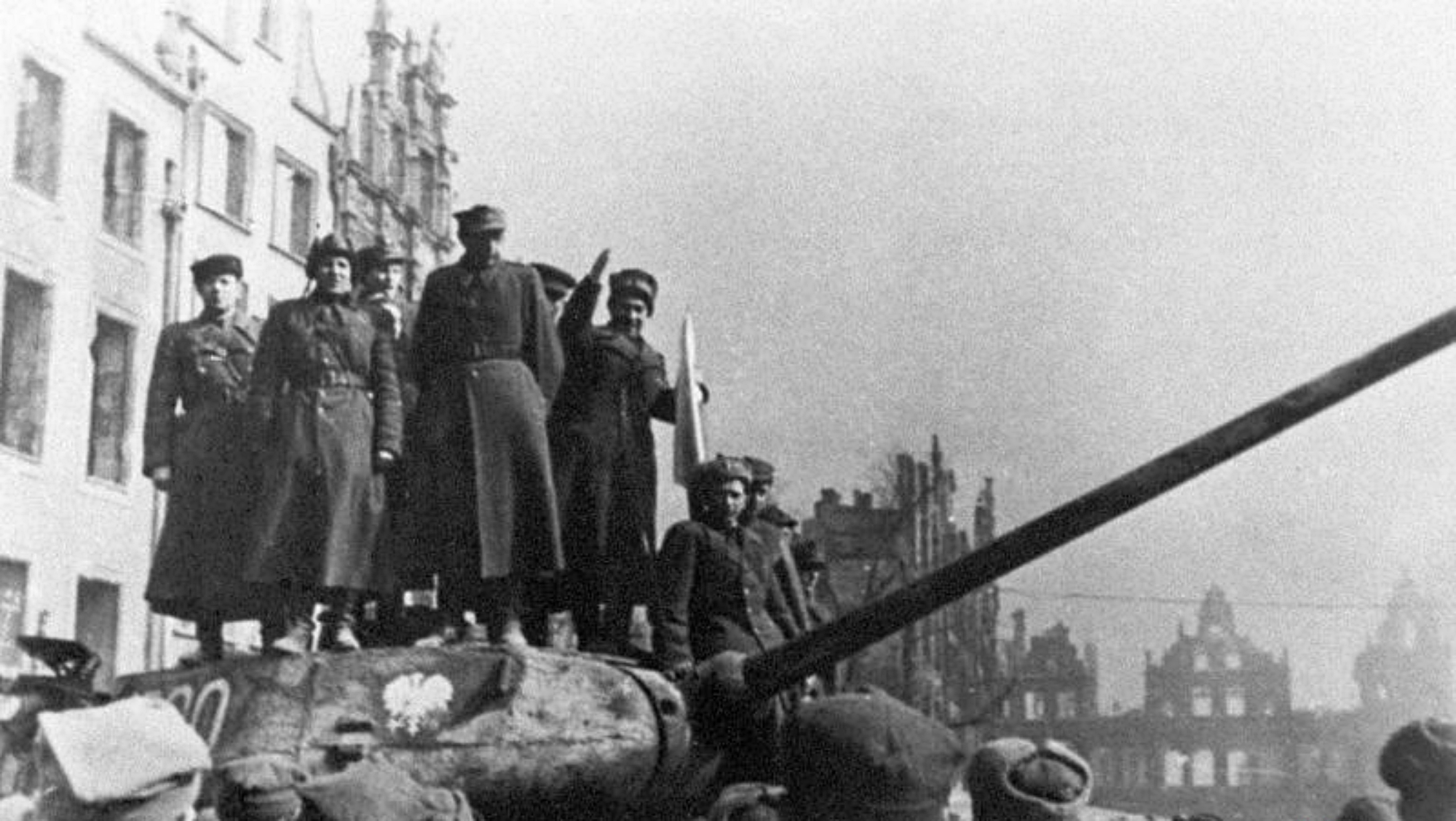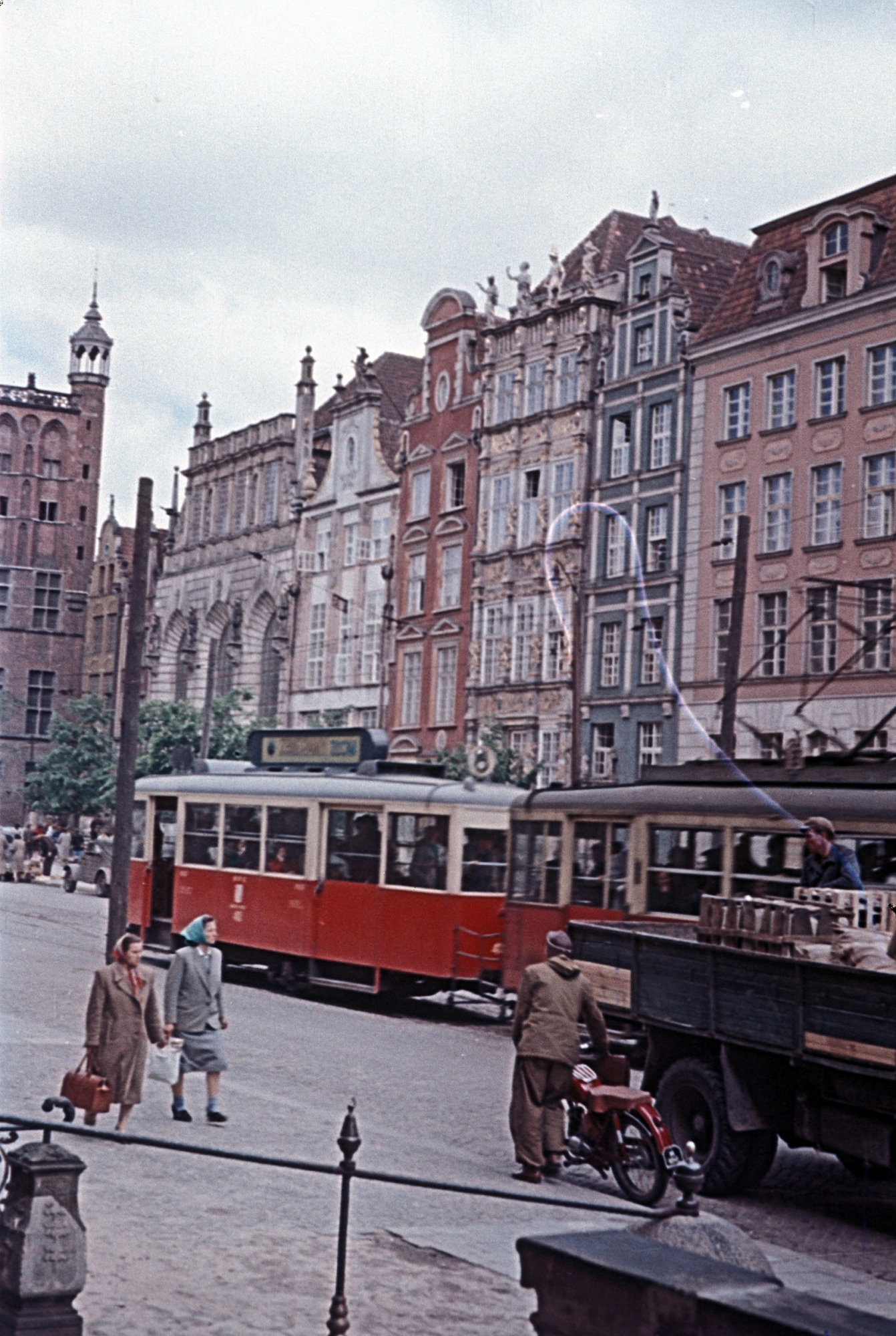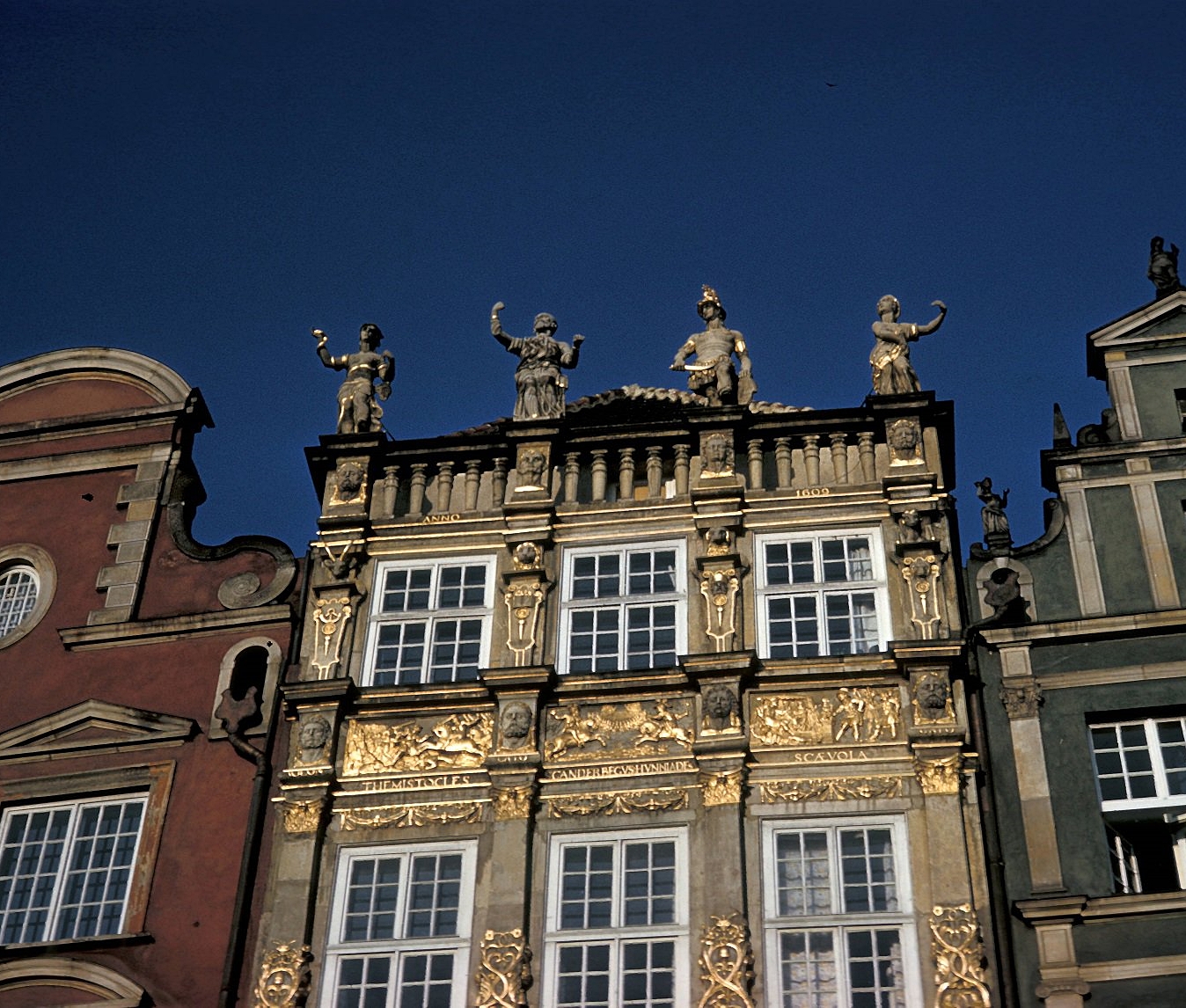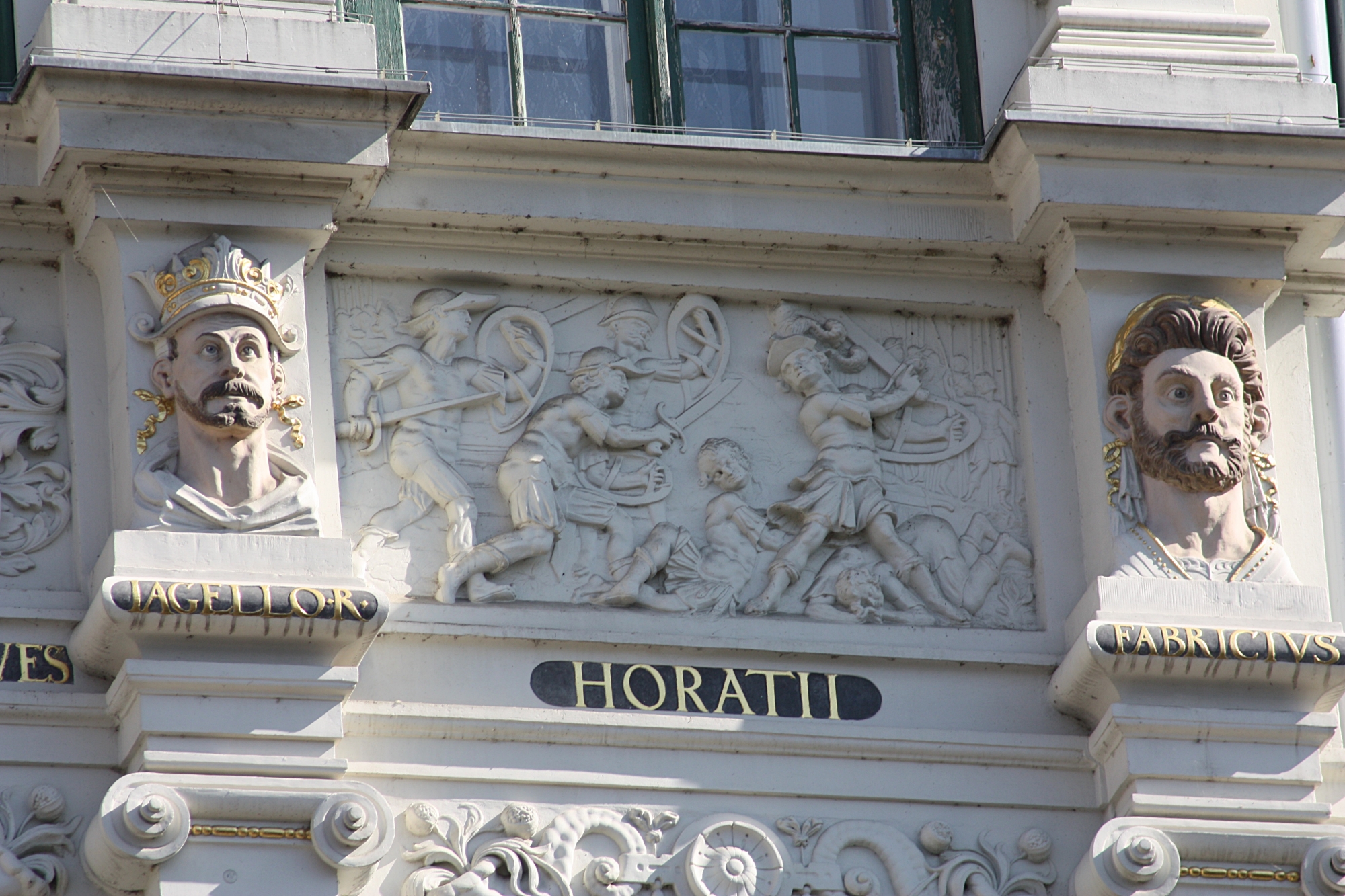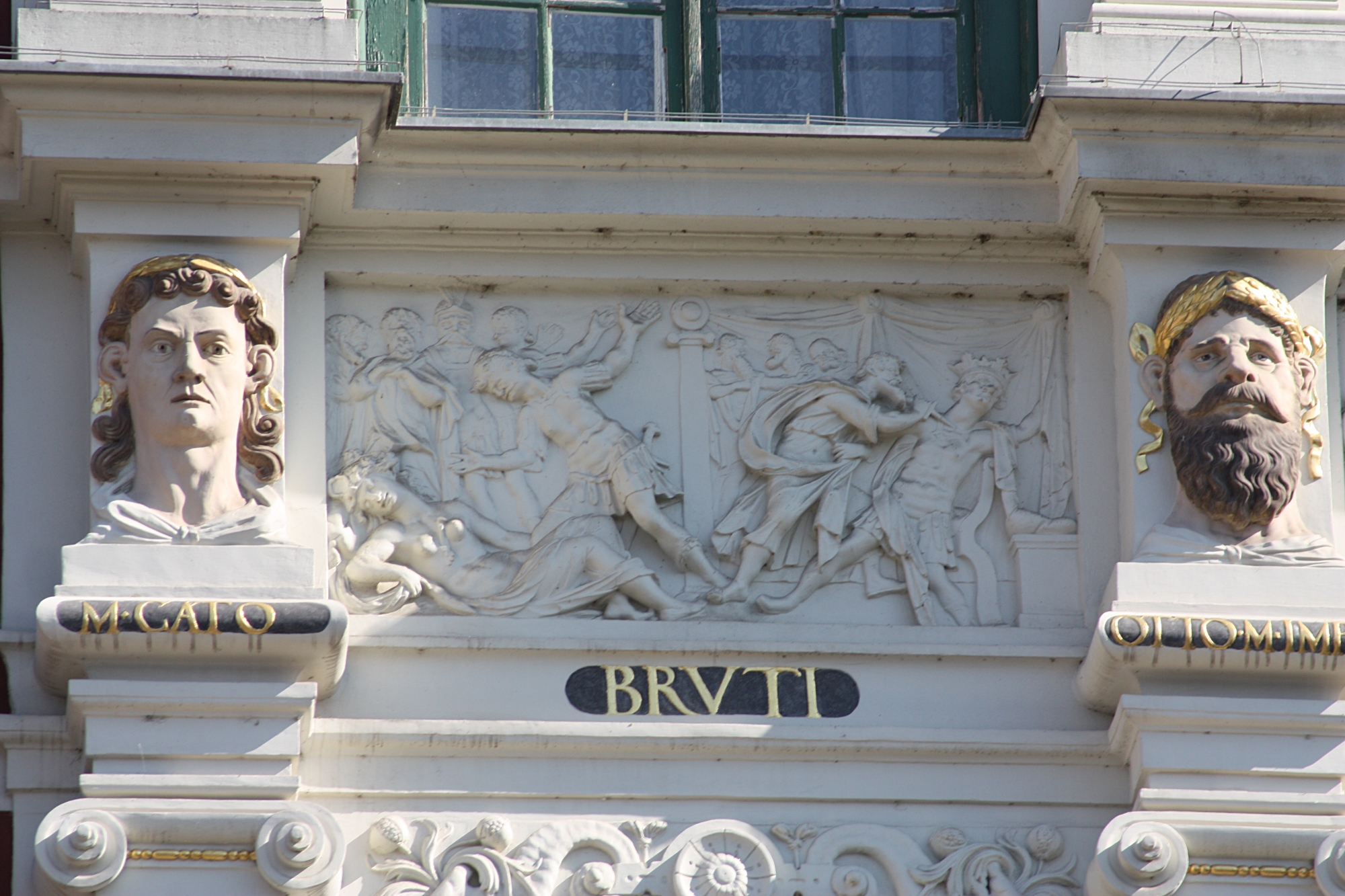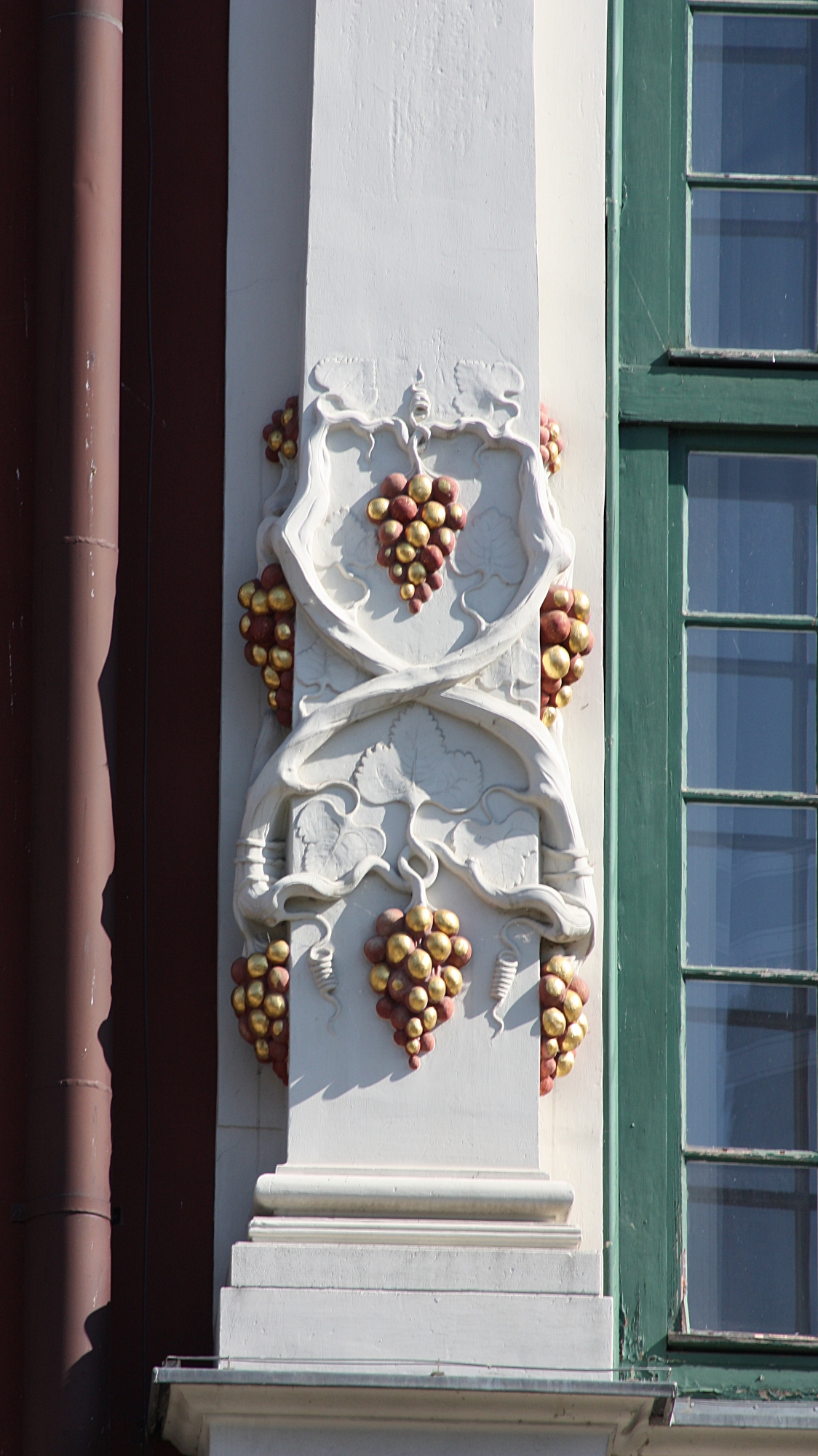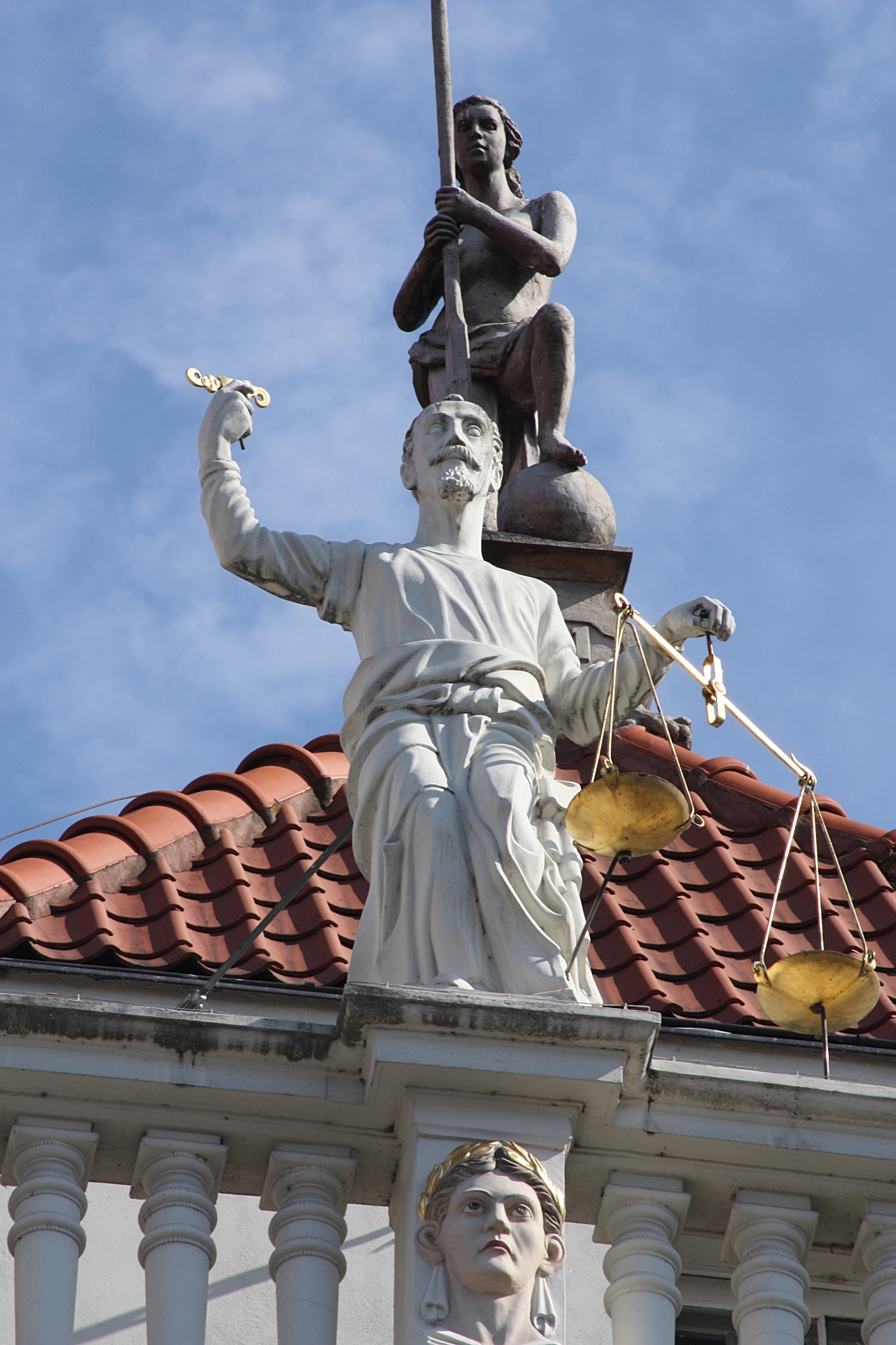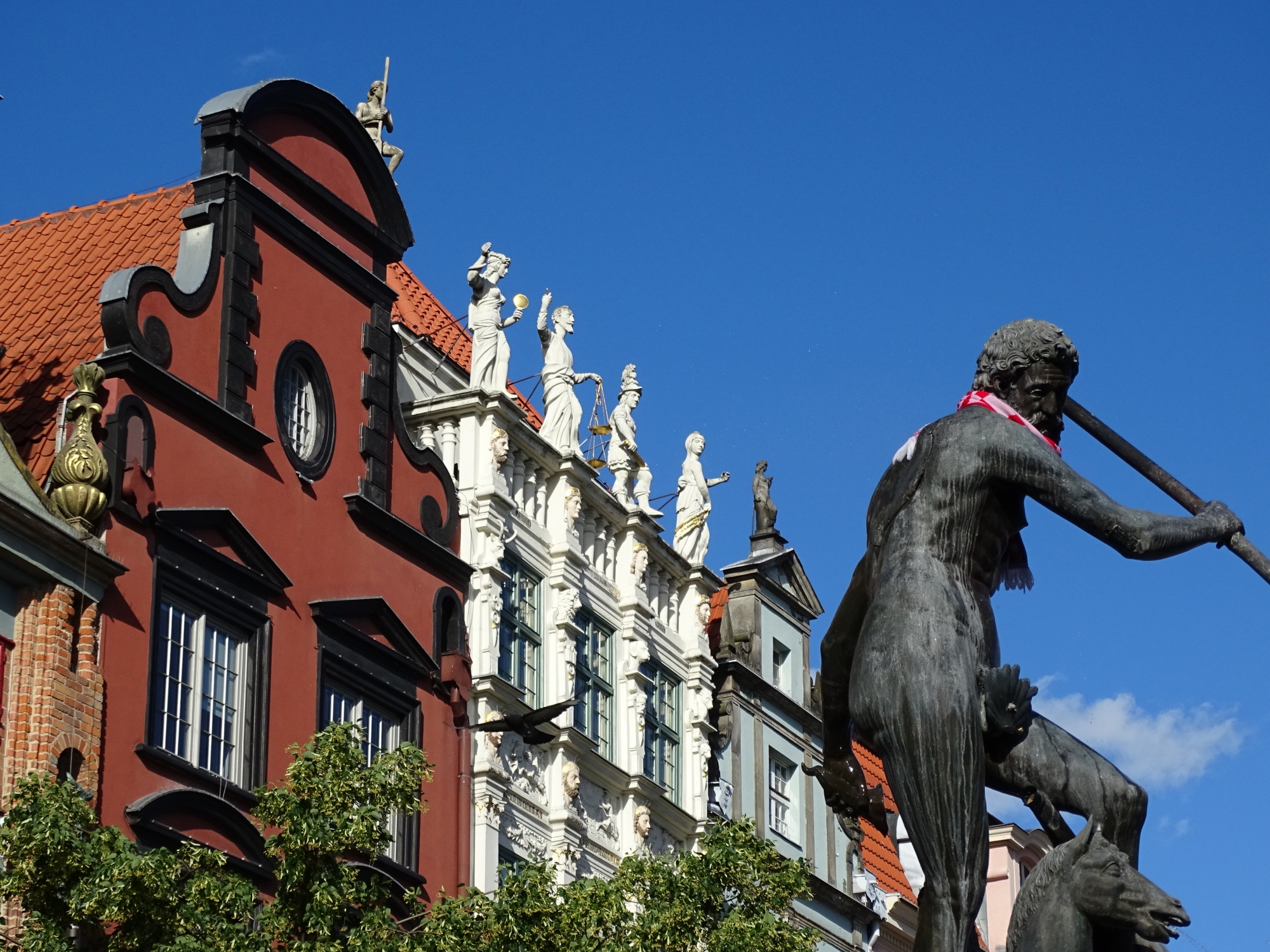The Golden House, also known as the Steffens House or Speymann House, is one of the most important monuments of Danzig’s secular architecture. The building was constructed at the beginning of the 17th century to a design by Abraham van den Blocke. It is located on the Royal Road in the Main Town, right next to Artus Court and the Town Hall.
The tenement was built between 1609 and 1618 at 41 Długi Targ Street, commissioned by Johann Speymann, Mayor of Gdańsk at the time. The façade is decorated in the Flemish Mannerism style, rich in references to the art of antiquity and civic virtues. The name Golden Tenement refers to the once richly gilded façade.
Długi Targ Street with the Golden Tenement House, 1960. Source: http://collections.lib.uwm.edu/
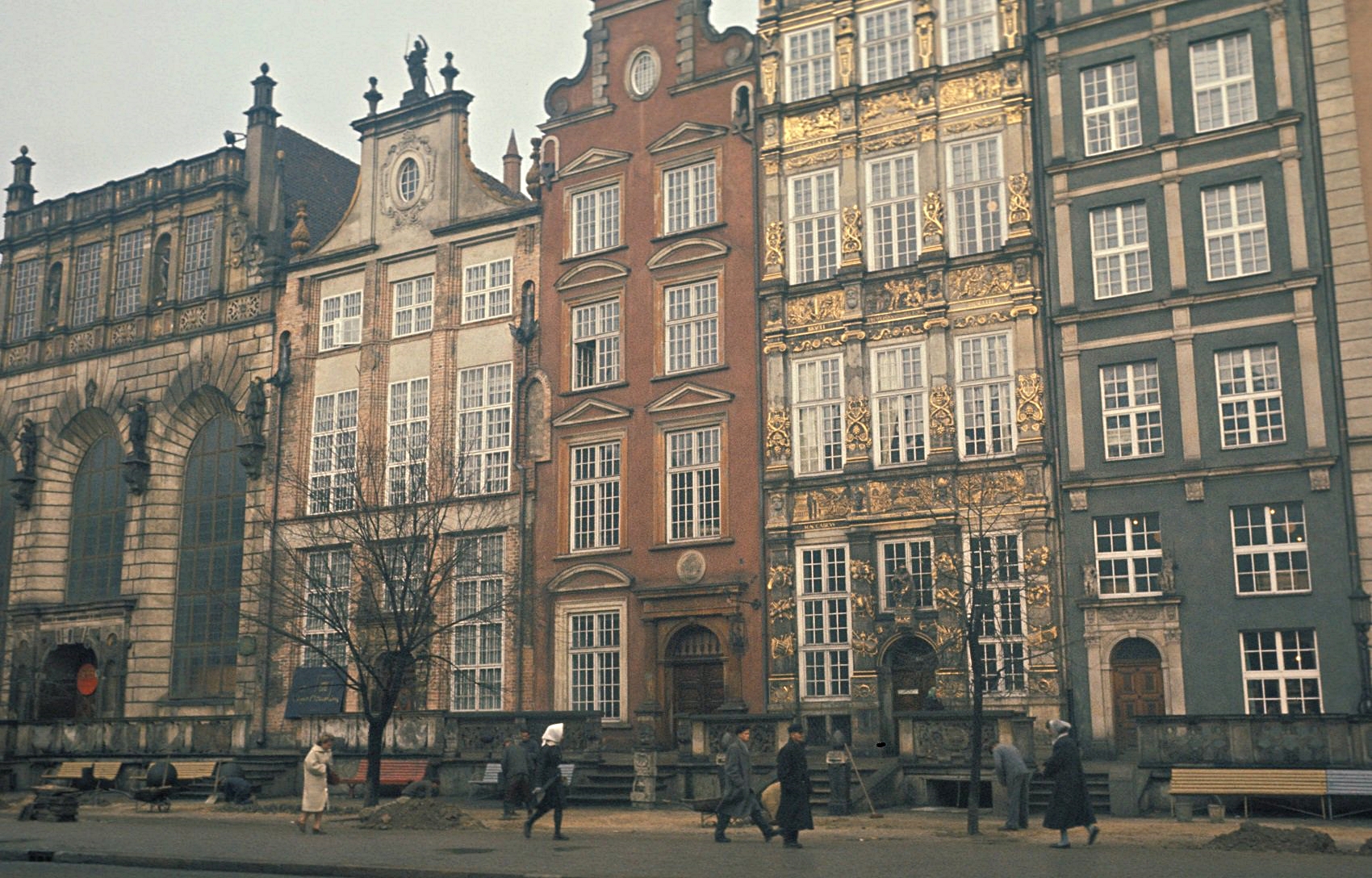
It features gilded stone reliefs made by the workshop of Abraham van den Block. The front wall features battle scenes and images of prominent figures. The bas-relief panels contain artistic depictions of famous battles and events of ancient history. In total, the façade features 12 effigies of rulers and eminent statesmen (including Sigismund III Vasa and Władysław Jagiełło), eight historical scenes and one field of arms, where the coats of arms used by its former owners are displayed.
A fragment of Długi Targ Street in 1935 and today. Source: www.deutschefotothek.de and Marcin Białek, CC BY-SA 4.0, via Wikimedia Commons
The basement of the tenement after renovation and reconstruction in the 1930s and after 1945. Source: Pomeranian Digital Library and gdansk.gedanopedia.pl
From the façade of the building one can read the striving for balance and harmony, typical of the Renaissance, and this tendency is subordinated both to the stylistics of the decoration and to the ideological content it contains. After 1660, the building was bought by another mayor of Gdańsk, Piotr Henrich. Then, between 1786 and 1918, the building was owned by the Steffens family of Gdansk. From 1938 to 1945 it housed the West Prussian Provincial Museum.
Portal and forecourt of the Golden House in the early 1920s and 1930s Source: Bildarchiv Foto Marburg and the Pomeranian Digital Library
In the spring of 1945, the unique monument was almost completely destroyed. Only the partially burnt and leaning façade, in danger of collapsing at any moment, survived. After the war, efforts were made to rebuild the ruined Gdańsk with its most valuable monuments. In 1949, the Zlota Kamienica, rebuilt to a design by Marian Bajdo, was in its shell. The sculptural decoration was restored by Alfons Łosowski, an outstanding Gdańsk sculptor of Vilnius origin. He used broken fragments of authentic sculptures in his work, so about 70% of the façade is authentic.
The Golden House and its neighbour in 1938 and 1945. Photo: Bildarchiv Foto Marburg and the Gdańsk Prestige Zone
Zlota Kamienica and its neighbour in 1945 and 2021. photo Gdansk Strefa Prestiżu and Diego Delso, CC BY-SA 3.0, via Wikimedia Commons
The Golden House and its neighbour in 1938 and 2021. photo by Bildarchiv Foto Marburg and Diego Delso, CC BY-SA 3.0, via Wikimedia Commons
Work on the gilding was carried out until 1955. The restoration of the monument was a great achievement of Polish conservation thought, especially in relation to the difficult times and scarce resources of the time. In 2001, a renovation of the building was carried out, which aroused considerable controversy. At that time, most of the gilding was removed from the façade, causing the monument to lose its visual appeal.
The Maritime Institute has operated in the building since 1952.
Source: infogdansk.pl, gdansk.gedanopedia.pl
Read also: Architecture in Poland | Facade | Monument | History | Gdańsk

